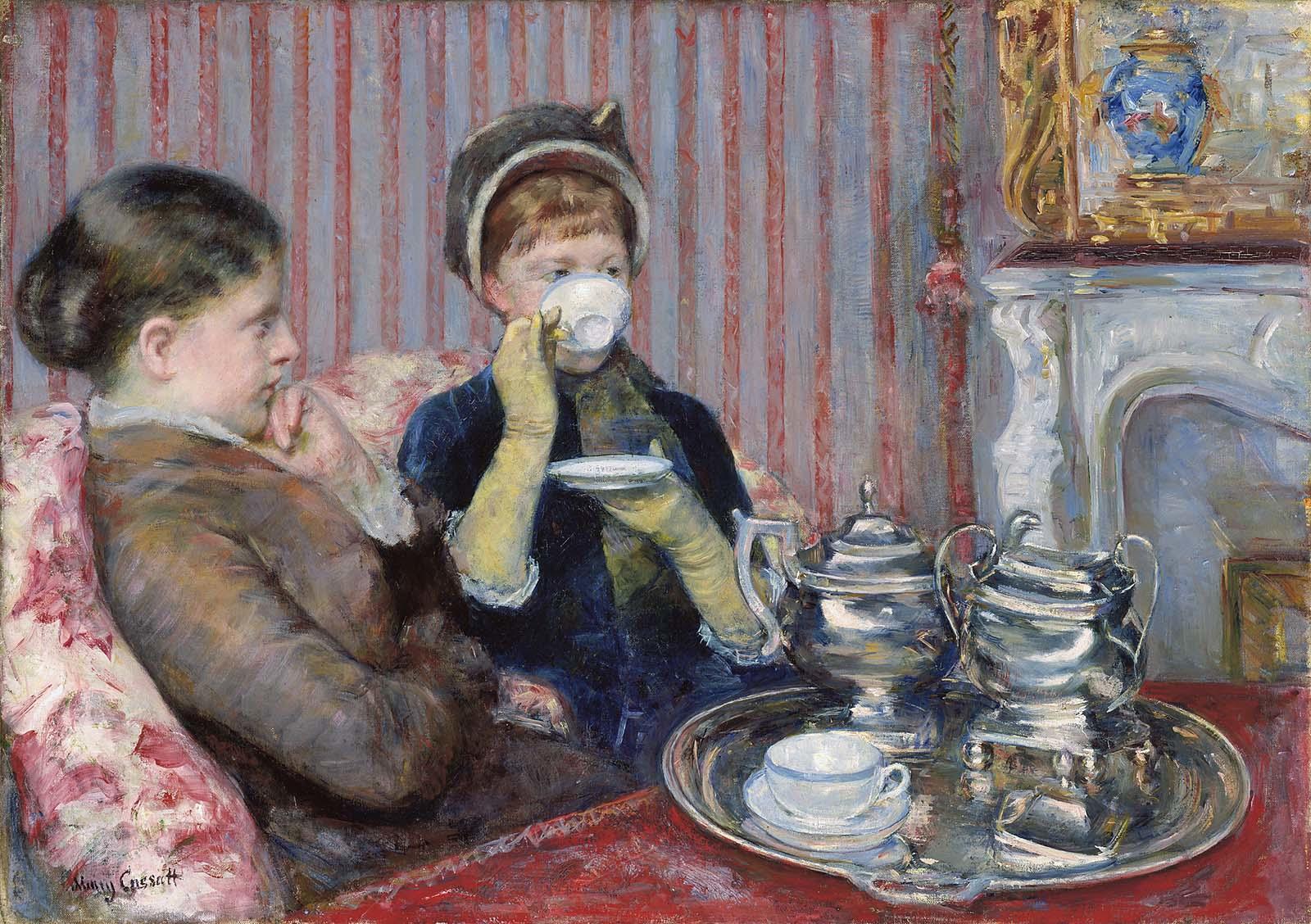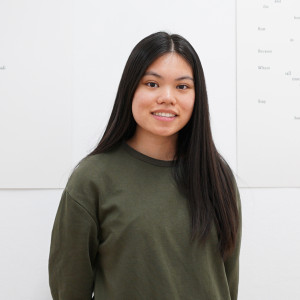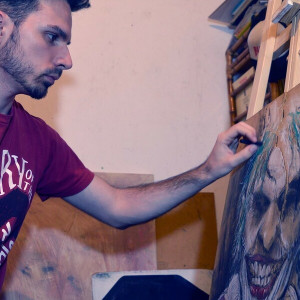Mary Cassatt is a prime example of many things: resilience, tenacity, and artistic mastery are just a few. Although she was met with many unfortunate events in her personal and artistic life over many years, she insisted on continuing with her dream. Her efforts were successful, earning her recognition in life as well as in the ages after her death.

Early Life
Mary Cassatt is a supreme example of using grit and perseverance to achieve lofty goals. She was born near Pittsburgh, Pennsylvania, to a wealthy family that exposed her to the arts and international travel at a young age for her education. To their dismay, she fell in love with the arts and wanted to become a professional. Mary’s family all but forbade her from pursuing a career as an artist, but she rebelled and attended the Academy of Fine Arts in Philadelphia. She went a step further and moved to Paris, in 1866.
While she wasn’t able to join the École des Beaux-Arts (because she was female), Cassatt reached out to some of the professors who taught there for private studies. She connected with Jean-Leon Gerome, who helped her develop her artistic talents. Cassatt was a dedicated student who spent time each day at the Louvre copying the paintings there as a means of study and practice.
Seek your own mentor with painting classes Brisbane on Superprof.
Cassatt submitted work to the Paris Salon in 1868, “The Mandolin Player,” which was accepted by the selection jury for inclusion in its upcoming exhibition. Mary continued to submit work to the Salon, but was met with rejection after rejection. Cassatt returned to the United States in 1870 due to the start of the Franco-Prussian War. She showed two pieces in New York, which were well-received, but did not manage to sell them. Feeling a failure, Mary just about gave up art altogether.
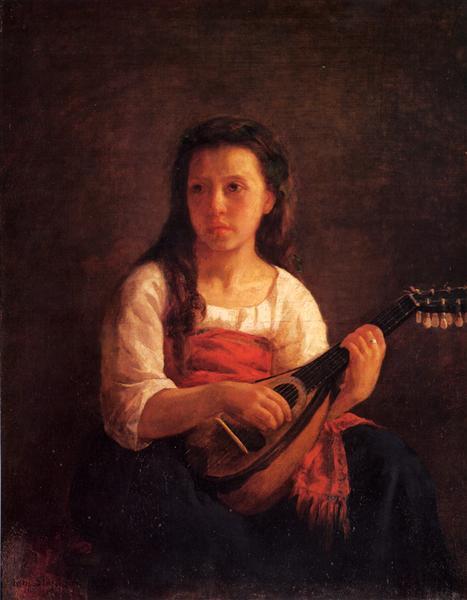
She travelled to Chicago to try to sell her work again, and suffered another blow: some of her art was lost in the Great Chicago Fire in 1871. But, finally, there was a ray of hope: the Archbishop of Pittsburgh saw her work and commissioned two copies of paintings located in Parma, Italy. Mary was able to, with the commission money, pick up her brush and travel back to Europe!
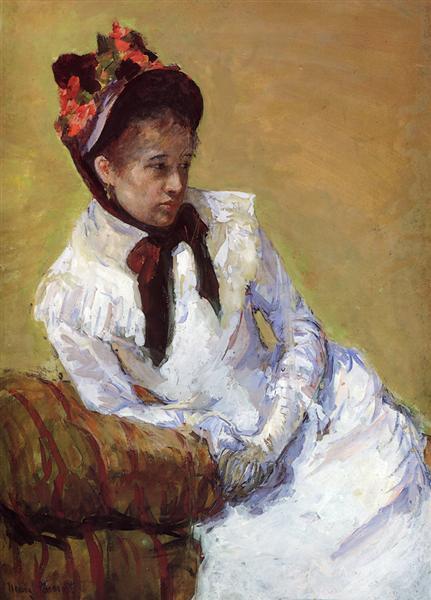
This trip was more fruitful than her previous one. She had another painting accepted into the Salon in 1872, and her work started to gain traction across Parma.
In 1874, she and her sister Lydia moved to France.
In 1877, after many rejections from the Salon, Cassatt tried and failed to market herself as a portraitist for socialites, a common move for female artists, such as Artemisia Gentileschi millennia before.
Then, Edgar Degas invited Cassatt to show with the Impressionists. Since Cassatt had long been an admirer of Edgar Degas’s art, she jumped at the chance. Over the next two years, Cassatt poured herself into her work to create her best works yet for the 1879 Impressionist exhibition. She re-evaluated her artistic process and style and began carrying a sketchbook with her to document scenes she saw outdoors and at the theatre.
Cassatt’s career started to bloom once the exhibit opened.
Cassatt and Degas admired each other’s work and became close friends and collaborators. They had a lot in common, including a dislike for the term ‘Impressionists.’ Instead, they preferred to call themselves ‘Independents.’ It’s unlikely that they were ever romantically involved, although neither ever married. They remained friends for decades, even after parting ways artistically, until Degas’s death in 1917.
Little Girl in a Blue Armchair (1878)
One of the most successful paintings in the Impressionist exhibit was this still-popular classic. When she joined the Impressionists, Cassatt was only the second woman to join the group, after Berthe Morisot. Later on, Marie Bracquemond would also show work with the group, and the three were known as les trois grandes dames (the three great ladies) of Impressionism.
Little Girl in a Blue Armchair was a preview of the type of narrative Cassatt could evoke with a simple painting featuring children. The numerous, looming, giant chairs and couches give the impression that one is required to sit down, but the restless posture of the girl portrays the childlike, listless, bored, or over-tired energy that doesn’t fit into the stuffy living room invented by adults. Degas also helped Cassatt with certain details in this painting.
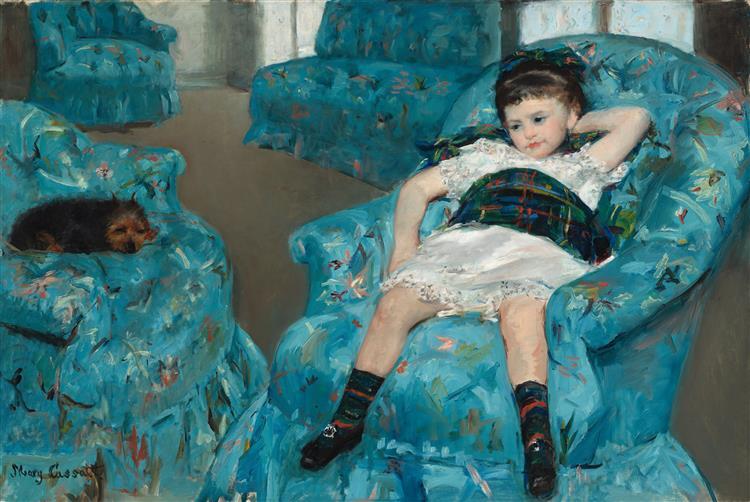
Dans La Loge (1878)
Cassatt created several paintings featuring women in the theatre. Such an activity was a favourite pastime of Parisians, who enjoyed the cultural and entertainment value, but also the opportunity to see and be seen by others.
Other (male) artists often depicted women in theatre lodges as if they were animals in a beautiful cage on display. In Cassatt’s interpretation, we are inside the theatre box with the woman, who is looking outward. In the background, a male theatre-goer looks into the box at the woman (and us).
Although this particular painting wasn’t part of her exhibition with the Impressionists, she included several other versions of paintings and pastel drawings of women in lodgeboxes in the 1879 collection.
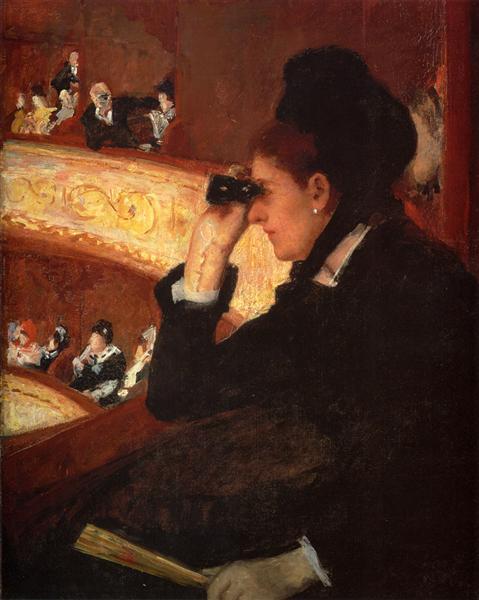
The Tea (1880)
Met with mixed reviews at its debut, this scene depicts two upper-class Parisian ladies in the middle of a social appointment. The hostess, on the left, lets her mind wander for a moment as her guest sips her tea. Perhaps they’ve been talking for a long time, and need a break, or perhaps the guest has just arrived (she is wearing her outdoor coat and gloves) and they haven’t settled into a rhythm yet.
Either way, the intention is to capture a moment in everyday life between two women. The same way we might snap a candid photo of our friends at lunch together at a trendy cafe today.
Find an effective painting course Melbourne here on Superprof!
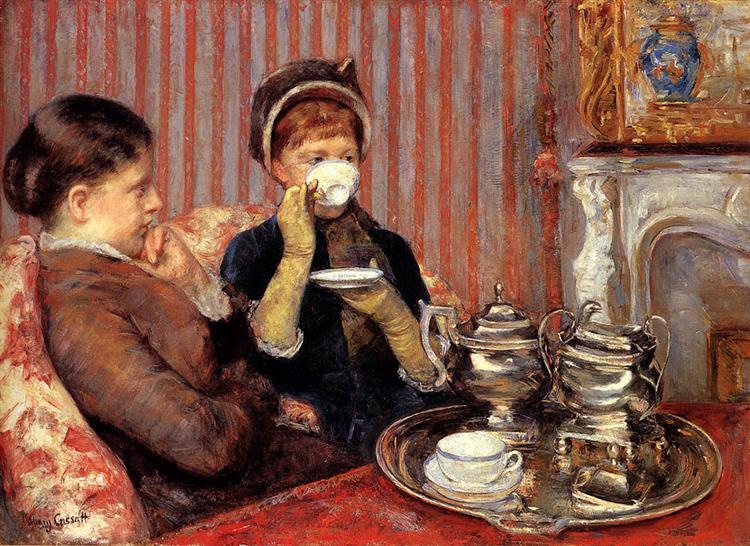
Lydia Crocheting in the Garden at Marly (1880)
Another theme of many of Cassatt’s paintings are women doing soome sort of labour. Whether child-rearing, driving a horse carriage, personal grooming, sealing an envelope, or sewing, Cassatt aimed to show that women could do more than be an object in a scene. She also dearly loved her sister, Lydia, and frequently painted her.
Here, we also get a glimpse of a rare plein-air Cassatt painting, who typically preferred working her studio either with live models or off of her sketches. Lydia, a well-to-do woman, engages with this handicraft just the same as someone from a lower social class might; it’s one thing that could be a common scene across all of European society.
Sadly, Lydia passed away in 1882 at age 45, due to a kidney disease. Her death and the years of sickness leading up to it were very hard for the entire Cassatt family, especially Mary.
A female painter who took a very different approach to art? Helen Frankenthaler, who preferred Abstract Expressionism.
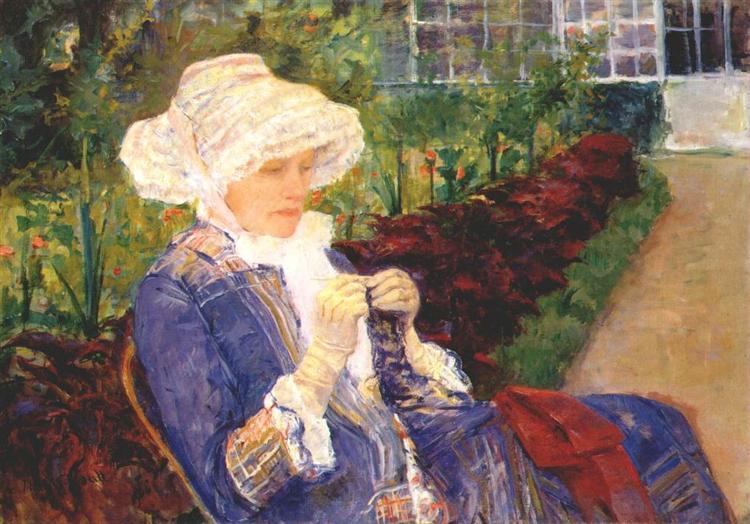
Mother and Child (1890)
Unlike other female artists, such as Georgia O’Keeffe, Cassatt didn’t have a grand love story or dramatic romantic relationship in her life. Of course, neither situation is better than another; it was just unusual at the time for a woman to choose to remain unwed for life, which is what Cassatt did.
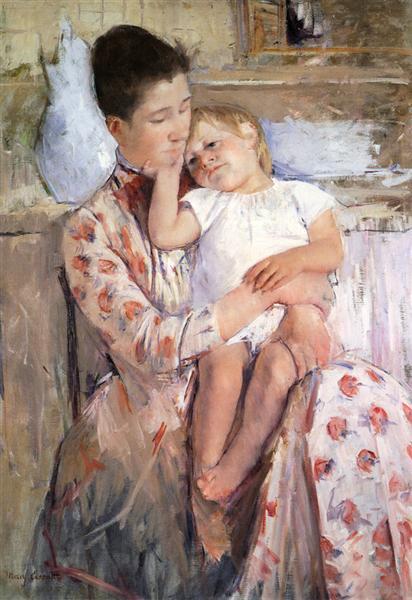
She decided early in her life that she wanted to focus on being a professional, successful artist, and that a relationship or marriage would be incompatible with her goals.
Cassatt also never had children, which makes sense since she never wed, and children out of wedlock at the time were seen as a great shame.
But, this didn’t stop her from being fond of children and recognising the importance of mothers’ work.
There is more to Cassatt’s choice to feature mothers and children, which we will explore in the next few paintings.

The Coiffure (1890-91)
You’ll also notice Cassatt’s style has changed; around 1886, Cassatt experimented more with technique and perspective, and started printmaking. She, like many other artists at the time, was also heavily inspired by Japanese block designs, ukiyo-e, which is evident in many of her works after 1886. But, she didn’t formally identify herself with any particular art movement.
To recreate the Japanese block print appearance, Cassatt used printmaking techniques she was already familiar with.
The Coiffure is a great example, made with three copper plates of colour using the drybrush and aquatint techniques.
Here, she depicts a mundane part of the average woman’s day: styling her hair. Although the subject is partly nude, there is nothing sexual about the image; she is simply a woman existing.
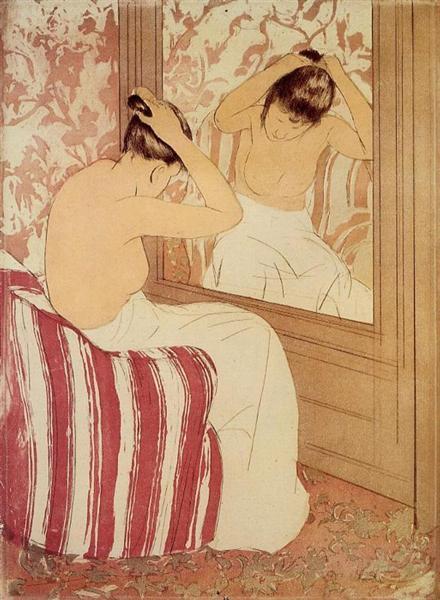
The Child’s Bath (1893)
The bold outlines found in this painting are inspired again by the Japanese art style. However, this painting is much more three-dimensional and aligned with Western style painting.
Here, Cassatt again elevates the overlooked labour done by mothers (and nannies) to take care of children. She regards both the parental figure and the child as worthy of focus for their innate humanness. Most paintings of women at the time (and through all time, even to modern day) revolved around the woman’s sensual or sexual aspects: showing her curves, her bare breasts and body; in relation to men, she could be the object of worship or prey; if she was with a child it was glorifying her fertility or it was a depiction of Madonna with Child.
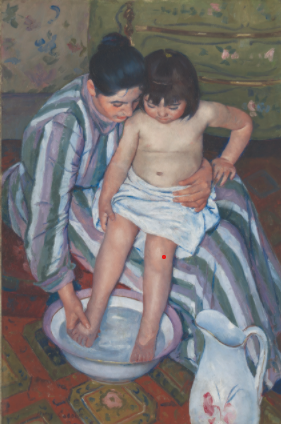
Cassatt believed women should be worth attention without hyperfocusing on these elements.
She also believed children’s natural energy should be embraced, rather than portray them as little adults.
This is also why she was comfortable depicting nude children–they are not tiny adults and therefore should not be held to the adult gaze.
Georgia O'Keeffe also struggled with people believing her paintings to be more sexual or sensual than they really were.
The Boating Party (1893-94)
Unlike other boating scenes by other (again, mostly male) painters at the time, Cassatt depicts a more animated outing, featuring a husband and wife together with their young child. The man’s face is obscured, but he is a driving force in the portrayal and in real life as he rows the boat along. The mother, sitting at an odd angle, suggests she is bracing herself against the tilt of the boat. The toddler looks awkward, as most toddlers would in such situations, slipping off the mother’s lap and likely squirming around.
Cassatt’s vision wasn’t to create idealised versions of real-life events. She included imperfect, “unposed” people in her paintings in contrast to most other artworks featuring dramatic and/or “perfectly-posed” subjects.
Find great painting classes Perth here on Superprof!
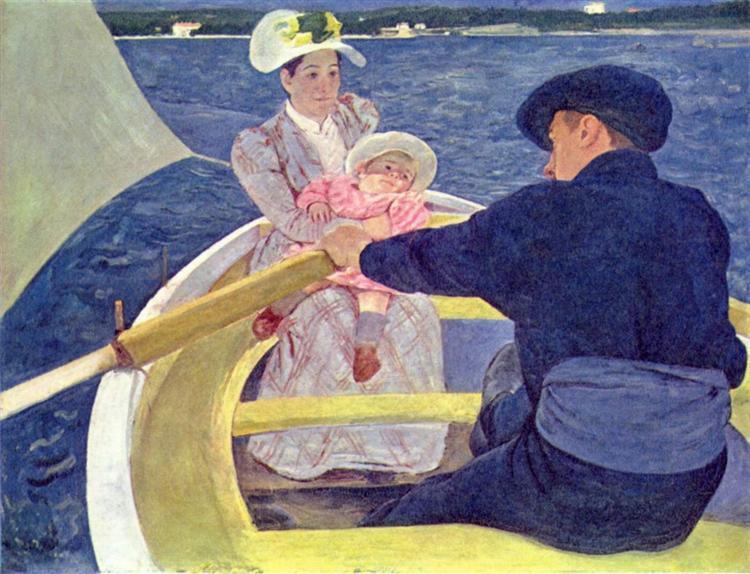
Young Mother Sewing (c. 1900)
Showing another tender moment between a mother and child, here we see an innocent toddler who has thrown herself onto her mother’s lap, oblivious to the fact that doing so might be inconvenient.
With her parental patience and skill, the mother is able to continue sewing without so much as pricking her finger or missing a stitch.
Such maternal “superpowers” transcend time!
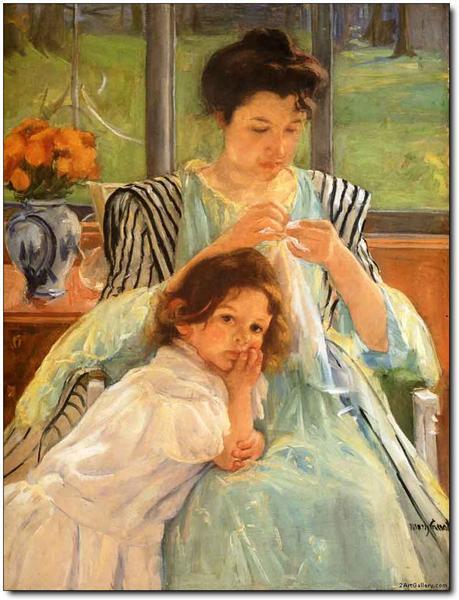
This particular scene was a favourite of feminist, and Cassatt’s dear friend, Louisine Havemeyer, who said
Look at that little child that has just thrown herself against her mother’s knee, regardless of the result, and oblivious to the fact that she could disturb “her mamma”. And she is quite right, she does not disturb her mother. Mamma simply draws back a bit and continues to sew.
Louisine Havemayer
Woman with a Sunflower (1905)
This subtle statement regarding the American Suffrage Movement was painted a year after France awarded Cassatt the Legion d’honneur for her contributions to the arts. The sunflower was the primary symbol for the movement, so the painting is undoubtedly made in support of women and their right to vote.
Frida Kahlo is another favourite female artist among feminists.
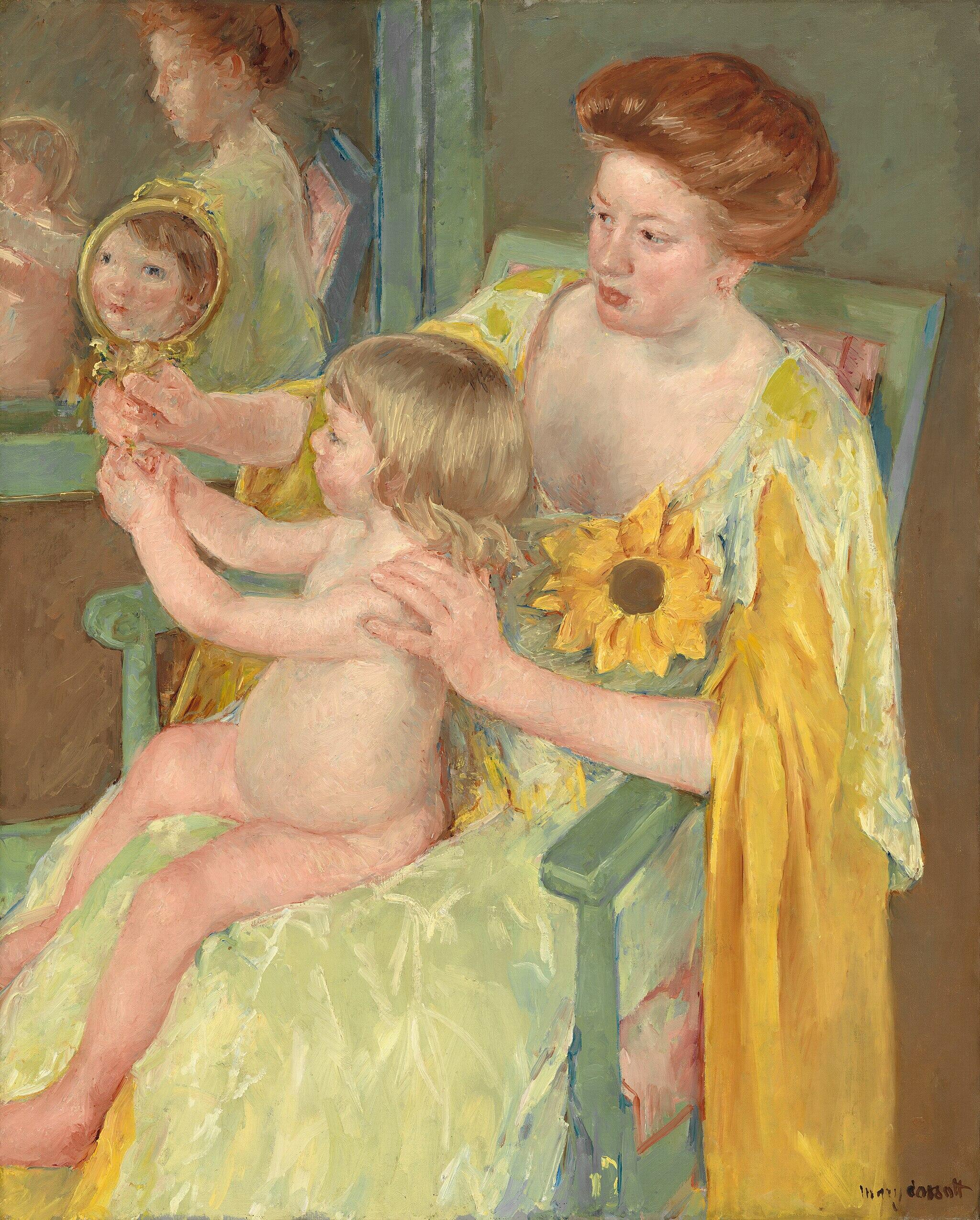
The other message of the painting can be found in the relationship between the mother and child and the small mirror. Mum appears to be helping the little girl learn how to see herself in the mirror, which can represent the small, strict boundaries society might place upon her as she grows up.
But the mother also teaches her daughter to learn how to get past those constraints and live a bigger life than what “society” says you can (just like Mary did).
Later Years
After about 1900, Cassatt became involved in the art consulting business, which included helping wealthy art enthusiasts (mostly Americans) research, find, evaluate, purchase, and ship art across the Atlantic to add to their personal collections. One of her best customers was her dear friend Louisine Waldron Elder and her exorbitantly wealthy husband, Henry Osborne Havemeyer.
Both her personal art sales and her art consulting helped Mary secure a more comfortable income. Poetically, she had proven her family wrong from all those years ago when they discouraged her from becoming an artist.
Mary was a talented art consultant. The Havemeyer Collection consisted mainly of paintings she curated. In 1983, 19 paintings from the collection were auctioned off for $16.8 million USD, proving she had made a wise investment for her clients. Cassatt also used her position to promote Impressionist and her friends’ works to wealthy Americans.
In 1914, Cassatt’s eyesight had deteriorated so much that she was forced to give up painting. She transitioned her energy into advocating for political movements, such as women’s suffrage, which she had been a supporter of since her youth. She even helped organise a charity exhibition featuring some of her work in support of the suffrage movement in 1915.
She continued to support the movement as much as she could in her old age and ill health before passing away at her home in Chateau de Beaufresne, near Paris, in 1926.
Cassatt is a great contributor to the ranks of female artists in history!
References
- Article, R. W. S. T. (2024). Art Bites: Mary Cassatt Was Not a Fan of Mother’s Day. In Artnet News. https://news.artnet.com/art-world/art-bites-mary-cassatt-mothers-day-2535744
- Article, T. B. S. T. (2024). How Mary Cassatt Got America Hooked on Impressionism. In Artnet News. https://news.artnet.com/art-world/art-bites-cassatt-impressionism-havemeyer-collection-2547624
- Gregory, A. (2021). 5 Fast Facts: Mary Cassatt. In National Museum of Women in the Arts. https://nmwa.org/blog/5-fast-facts/5-fast-facts-mary-cassatt
- In the Loge. (n.d.). In collections.mfa.org. https://collections.mfa.org/objects/31365/in-the-loge
- Madsen, A. K. (2020). Cassatt’s Modern Vision of the Everyday. https://www.artic.edu/articles/818/cassatts-modern-vision-of-the-everyday-2
- Mary Cassatt. (n.d.-a). In marycassatt.org. https://marycassatt.org/biography.html
- Mary Cassatt. (n.d.-b). In National Museum of Women in the Arts. https://nmwa.org/art/artists/mary-cassatt
- Masterpiece Story: Little Girl in a Blue Armchair by Mary Cassatt. (2025). In DailyArt Magazine. https://www.dailyartmagazine.com/mary-cassatt-little-girl-in-a-blue-armchair
- Rusu, R. (2025). Mary Cassatt: Motherhood in 5 Paintings. In DailyArt Magazine. https://www.dailyartmagazine.com/mary-cassatt-paintings
- Smarthistory. (n.d.). In Mary Cassatt, Little Girl in a Blue Armchair. https://smarthistory.org/cassatt-little-girl-in-a-blue-armchair
- The Tea. (n.d.). In collections.mfa.org. https://collections.mfa.org/objects/32829
- Weinberg, H. B. (2004). Mary Stevenson Cassatt (1844–1926) - The Metropolitan Museum of Art. In www.metmuseum.org. https://www.metmuseum.org/essays/mary-stevenson-cassatt-1844-1926
- Woman with a Sunflower by Mary Cassatt. (n.d.). In www.nga.gov. https://www.nga.gov/artworks/46573-woman-sunflower

